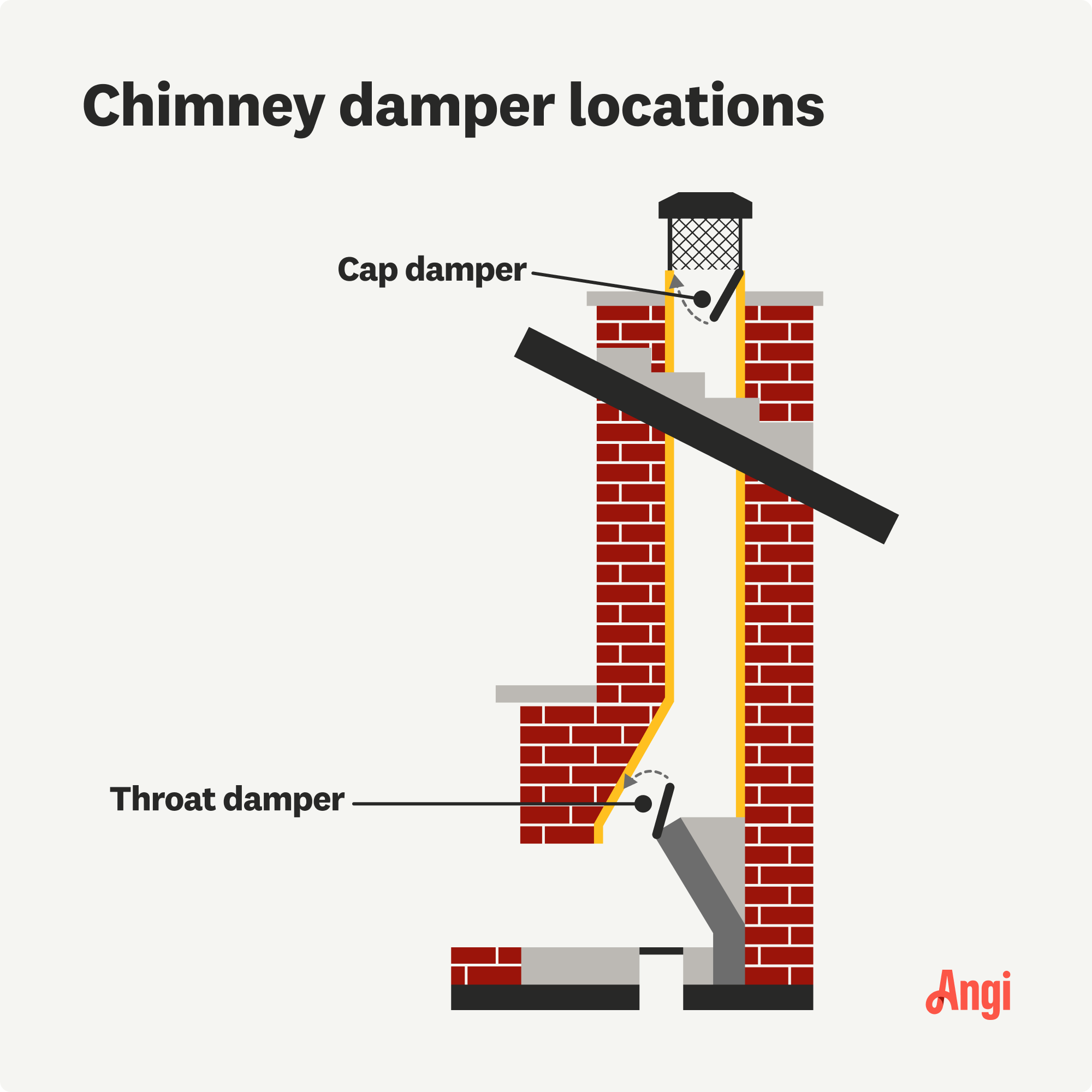How to Remove a Chimney Damper in 4 Steps
This simple fireplace maintenance task can be completed in an afternoon


- Screwdriver
- Wire brush
- Flashlight
- Work light
- Gloves
- Drop cloth
- Dust mask
- Batteries (for your flashlight)
- Heavy-duty garbage bags
A chimney damper is an essential component for venting your fireplace. Removing it is typically the first step before chimney sweeping, and removal may also be necessary if the damper has rust or soot damage. Any DIYer who earned a notch or two on their toolbelt can learn how to remove a chimney damper with guidance. Get ready to roll up your sleeves to ensure your fireplace works safely.
Prepping for Damper Removal
Before starting your project, move or cover furniture near the fireplace to keep it soot-free. Next, clear out your fireplace by removing logs, grates, and decorative items. This will give you room to work. Finally, grab your drop cloth and place it in front of your fireplace to catch debris.

How to Remove a Chimney Damper
First off, wear your face mask, gloves, and safety glasses. Also, remember that a flashlight and work light are essential for seeing in your dark fireplace. Removing a chimney damper involves cleaning the fireplace and damper, unscrewing the fasteners, and then removing the damper plate from its frame. Here’s a step-by-step guide on how to do it.
Clean the Fireplace and Damper
 Photo: Bill Oxford / iStock / Getty Images Plus / Getty Images
Photo: Bill Oxford / iStock / Getty Images Plus / Getty ImagesGrab your wire brush. Brush away soot and debris from your fireplace and damper. Afterward, sweep it up and place it in a heavy-duty garbage bag. If you own a shop vacuum, use it to remove any remaining debris. Unlike regular household vacuums, shop vacuums have superior suction and won't blow irritants into the air.
Unscrew the Fasteners
The damper is a small door that opens and closes using a bar that enables movement. Typically, the screws holding it in place are on the damper plate itself.
Carefully unscrew the fasteners using your screwdriver, noting where each one is located for easier reassembly if needed later. Remember to hold the damper securely while performing this task to prevent it from dropping suddenly, which could cause serious injury.
Remove the Damper
Once you remove the screws, gently remove the damper plate out of its frame. To do this, tilt the damper up so it is open. You may find a bracket that holds it into place; if so, remove the bracket and then slip the damper out.
If the damper is stuck because of rust or soot, wiggle it gently back and forth. It will eventually loosen, allowing you to pull it out.
Final Clean Up
 Photo: Bill Oxford / iStock / Getty Images Plus / Getty Images
Photo: Bill Oxford / iStock / Getty Images Plus / Getty ImagesAfter the damper is free, set it aside. Now, inspect the area. Clean out any remaining debris or soot. This step ensures a clean environment for damper installation. Remember, you want to leave your chimney with a damper. It is an essential feature for maintaining your fireplace's airflow.
DIY vs. Hiring a Pro
DIY could save you money and offer a learning experience. However, it can be time-consuming and risky if you're not careful, potentially leading to damage or safety issues.
On the other hand, hiring a professional ensures the job is done quickly, safely, and correctly, with the added benefit of a thorough inspection by a local chimney repair expert. Remember, working with a pro is always best if you are uncomfortable dealing with sooty and potentially harmful messes or your fireplace has a complex setup.
Frequently Asked Questions
Yes, a chimney damper is necessary. It controls airflow in and out of your fireplace, helping to retain heat when closed and allowing smoke to escape when open. Without a damper, your home could lose warmth during cold months, leading to higher energy bills. It also helps prevent downdrafts and keeps animals or debris from entering the chimney. In short, it’s essential for efficiency and safety.
A chimney damper and flue are two different parts of your chimney system with different purposes. The flue is a passageway for smoke and gasses to escape from the fireplace to the outside. The damper is a movable plate within the chimney that controls airflow by opening or closing the flue. The flue ensures proper ventilation, while the damper helps regulate heat retention and airflow.




















